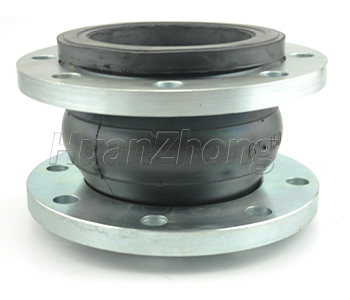What factors do we need to consider when shopping for wear-resistant and high-temperature-resistant
What factors do we need to consider when shopping for wear-resistant and high-temperature-resistant flexible connection flexural expansion joints?
When shopping for wear-resistant and high-temperature-resistant flexible connection flexural expansion joints, there are several important factors that need to be considered. These factors ensure that the chosen expansion joints will effectively withstand the specific conditions they will be subjected to. Here are some key factors to keep in mind:
Temperature Resistance: One of the primary considerations for flexible connection flexural expansion joints is their ability to withstand high temperatures. Different applications may require different temperature resistance levels, so it is crucial to select expansion joints that can operate within the anticipated temperature range. The joints should be able to handle both the continuous operating temperature and any potential spikes or fluctuations.
Material Compatibility: The expansion joint material should be compatible with the various media that will flow through the system. Consider the chemical composition, pH levels, corrosiveness, and abrasive nature of the media. For wear-resistant applications, it is important to choose a flexible joint made from materials resistant to abrasion, such as synthetic rubber or high-grade elastomers.
Pressure Rating: The expansion joints must be able to withstand the pressure exerted by the system. Take into account both the maximum operating pressure and any potential pressure surges. It is essential to select expansion joints with a pressure rating that exceeds the maximum system pressure to ensure safe and reliable performance.
Flexibility and Movement: Consider the expected movements and vibrations in the piping system. The expansion joints should be able to accommodate axial, lateral, and angular movements to prevent stress and strain on the joints and connected components. It is important to choose expansion joints that have sufficient deflection capabilities and flexibility to meet the system requirements.
Design and Construction: The design and construction of the expansion joints are crucial factors to consider. Look for expansion joints that are designed and manufactured by reputable suppliers with extensive experience in the industry. Ensure that the expansion joints comply with relevant international standards and specifications.
Service Life and Maintenance: Consider the expected service life of the expansion joints and any maintenance requirements. Longevity is important to minimize downtime, repair costs, and disruptions to the system. Look for expansion joints that are known for their durability and require minimal maintenance, such as those with self-lubricating features, corrosion-resistant coatings, or easily replaceable components.
Customization and Support: In some cases, customized expansion joints may be required to meet specific project requirements. Consider suppliers that offer customization options and provide technical support to ensure the expansion joints are tailored to your specific needs.
In conclusion, when shopping for wear-resistant and high-temperature-resistant flexible connection flexural expansion joints, it is important to consider factors such as temperature resistance, material compatibility, pressure rating, flexibility and movement capabilities, design and construction, service life, and customization options. By carefully evaluating these factors and selecting expansion joints that meet the specific application requirements, you can ensure optimal performance and longevity of your piping system.
